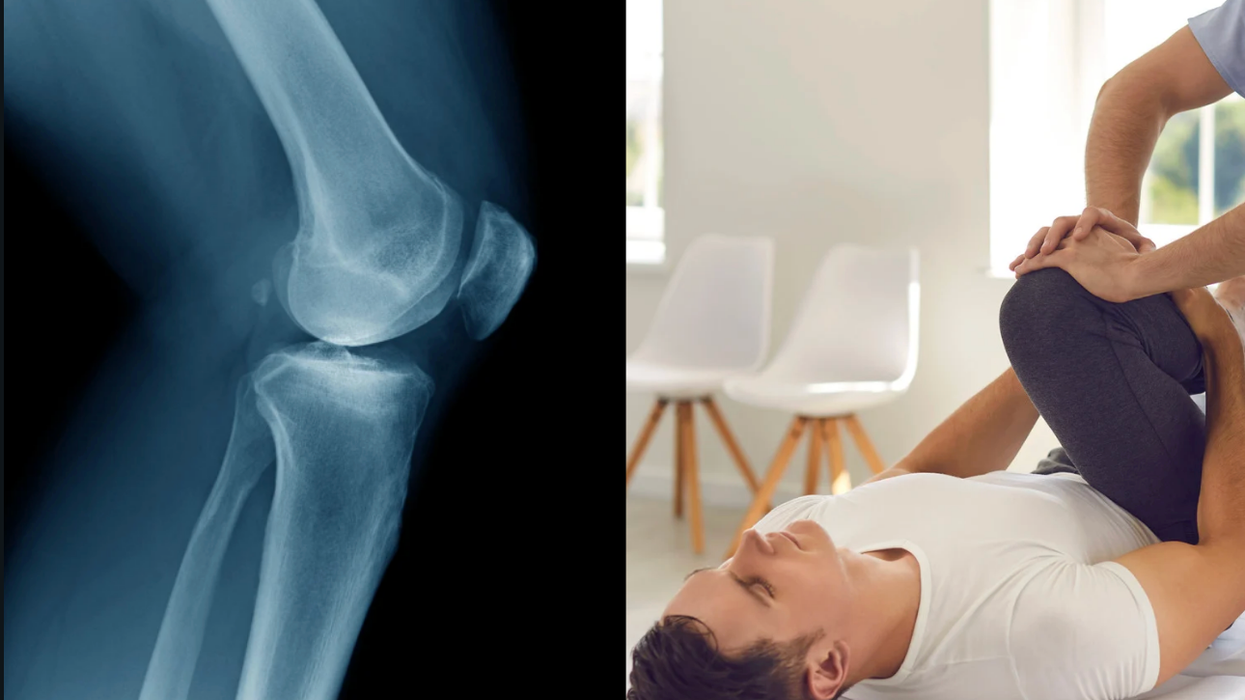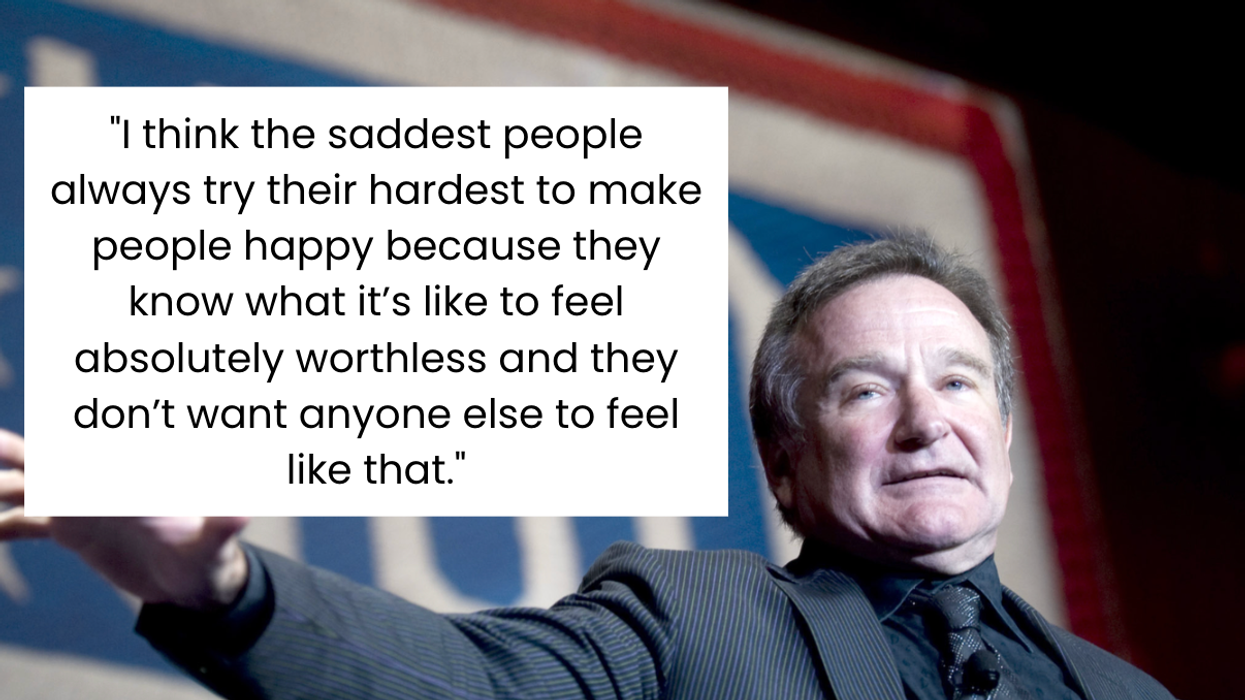Arthritis is an ever-growing and painful problem. According to a 2022 study by the Center for Disease Control, 18.9% of adults aged 18 to 65 suffer from some form of arthritis (and even that number might be too low). However, scientists from the University of Utah, New York University, and Stanford University have found an old school way to help those with knee osteoarthritis relieve pain without medication or surgery. Their answer? Walk it off.
Their study found that adjusting the angle of a person’s foot when they’re walking and retraining the gait of a person with osteoarthritic knees provided comparable pain relief to medication. On top of that, the participants who adjusted and retrained the gait show less cartilage deterioration over time compared to other participants given placebo treatments.
@themovementsystem Gait Analysis of a marathon runner. Cadence was spot on, good contact point between the foot and the gound. Primary issue to address is the narrow gait pattern. Don’t jump to clamshells and glute bridges. This can be addressed with cueing. #gaitanalysis #runninggait #marathontraining #marathonrunner #dpt #sportsphysicaltherapy #sportsphysio
In the study, 68 participants with osteoarthritic knee pain had MRIs taken, and were split into two groups—one was given a placebo treatment and the other group was trained to walk differently. Both groups then took part in six weekly lab-based training sessions in which participants in the gait training group had a device attached to their shins that guided them to keep their feet at the desired angle while walking on a treadmill. Following the training, the participants practiced their “prescribed gait” for 20 minutes each day until it turned into a natural habit and did follow-up visits to ensure that they stuck to their new gait. After a year, the participants self-reported their experience of knee pain and had a second MRI to assess their knee cartilage after the study, with both showing promising results.
“We’ve known that for people with osteoarthritis, higher loads in their knee accelerate progression, and that changing the foot angle can reduce knee load, so the idea of a biomechanical intervention is not new, but there have not been randomized, placebo-controlled studies to show that they’re effective,” said study author Dr. Scott Uhlrich to SciTechDaily.
- YouTube youtu.be
As Ulhrich said, adjusting how you walk to reduce the weight and stress on the knees isn’t a new recommendation from doctors. In fact, it has mostly been recommended to older people experiencing stiffness and pain so severe that it’s hard to move. And while gait retraining is mostly recommended by the Arthritis Foundation, one main issue is that it takes concerted effort and time from both patients and the doctors to ensure that the retrained gait becomes a permanent habit.
That said, this effort is necessary compared to other current pain management options. There is a global concern about osteoarthritic patients becoming addicted to the pain medication they’re prescribed for their ailment, creating a great need for alternative techniques and treatments to reduce pain. However, according to doctors like Ulhrich, this study reveals that this can be a way for younger people to manage their pain and develop a permanent habit that can improve and extend their quality of life until more drastic treatment measures need to be taken.
@dr.claire_physio Link in bio 🔗 to get the exact program I used to get out of chronic knee pain #arthritis #kneepain #kneepainexercise #kneepaintreatment #meniscus #acl
“Especially for people in their 30s, 40s, or 50s, osteoarthritis could mean decades of pain management before they’re recommended for a joint replacement,” Ulhrich said. “This intervention could help fill that large treatment gap.”
It’s important to note that if you think this method might help manage your arthritic pain, you should consult your doctor before attempting this or any form of treatment. They can help you find the best methods for you and refer you to the proper care professionals equipped to help you the best way possible.




















 Robin Williams performs for military men and women as part of a United Service Organization (USO) show on board Camp Phoenix in December 2007
Robin Williams performs for military men and women as part of a United Service Organization (USO) show on board Camp Phoenix in December 2007 Gif of Robin Williams via
Gif of Robin Williams via 
 A woman conducts a online color testCanva
A woman conducts a online color testCanva A selection of color swatchesCanva
A selection of color swatchesCanva A young boy takes a color examCanva
A young boy takes a color examCanva 

 Pictured: A healthy practice?
Pictured: A healthy practice?
Will your current friends still be with you after seven years?
Professor shares how many years a friendship must last before it'll become lifelong
Think of your best friend. How long have you known them? Growing up, children make friends and say they’ll be best friends forever. That’s where “BFF” came from, for crying out loud. But is the concept of the lifelong friend real? If so, how many years of friendship will have to bloom before a friendship goes the distance? Well, a Dutch study may have the answer to that last question.
Sociologist Gerald Mollenhorst and his team in the Netherlands did extensive research on friendships and made some interesting findings in his surveys and studies. Mollenhorst found that over half of your friendships will “shed” within seven years. However, the relationships that go past the seven-year mark tend to last. This led to the prevailing theory that most friendships lasting more than seven years would endure throughout a person’s lifetime.
In Mollenhorst’s findings, lifelong friendships seem to come down to one thing: reciprocal effort. The primary reason so many friendships form and fade within seven-year cycles has much to do with a person’s ages and life stages. A lot of people lose touch with elementary and high school friends because so many leave home to attend college. Work friends change when someone gets promoted or finds a better job in a different state. Some friends get married and have children, reducing one-on-one time together, and thus a friendship fades. It’s easy to lose friends, but naturally harder to keep them when you’re no longer in proximity.
Some people on Reddit even wonder if lifelong friendships are actually real or just a romanticized thought nowadays. However, older commenters showed that lifelong friendship is still possible:
“I met my friend on the first day of kindergarten. Maybe not the very first day, but within the first week. We were texting each other stupid memes just yesterday. This year we’ll both celebrate our 58th birthdays.”
“My oldest friend and I met when she was just 5 and I was 9. Next-door neighbors. We're now both over 60 and still talk weekly and visit at least twice a year.”
“I’m 55. I’ve just spent a weekend with friends I met 24 and 32 years ago respectively. I’m also still in touch with my penpal in the States. I was 15 when we started writing to each other.”
“My friends (3 of them) go back to my college days in my 20’s that I still talk to a minimum of once a week. I'm in my early 60s now.”
“We ebb and flow. Sometimes many years will pass as we go through different things and phases. Nobody gets buttsore if we aren’t in touch all the time. In our 50s we don’t try and argue or be petty like we did before. But I love them. I don’t need a weekly lunch to know that. I could make a call right now if I needed something. Same with them.”
Maintaining a friendship for life is never guaranteed, but there are ways, psychotherapists say, that can make a friendship last. It’s not easy, but for a friendship to last, both participants need to make room for patience and place greater weight on their similarities than on the differences that may develop over time. Along with that, it’s helpful to be tolerant of large distances and gaps of time between visits, too. It’s not easy, and it requires both people involved to be equally invested to keep the friendship alive and from becoming stagnant.
As tough as it sounds, it is still possible. You may be a fortunate person who can name several friends you’ve kept for over seven years or over seventy years. But if you’re not, every new friendship you make has the same chance and potential of being lifelong.